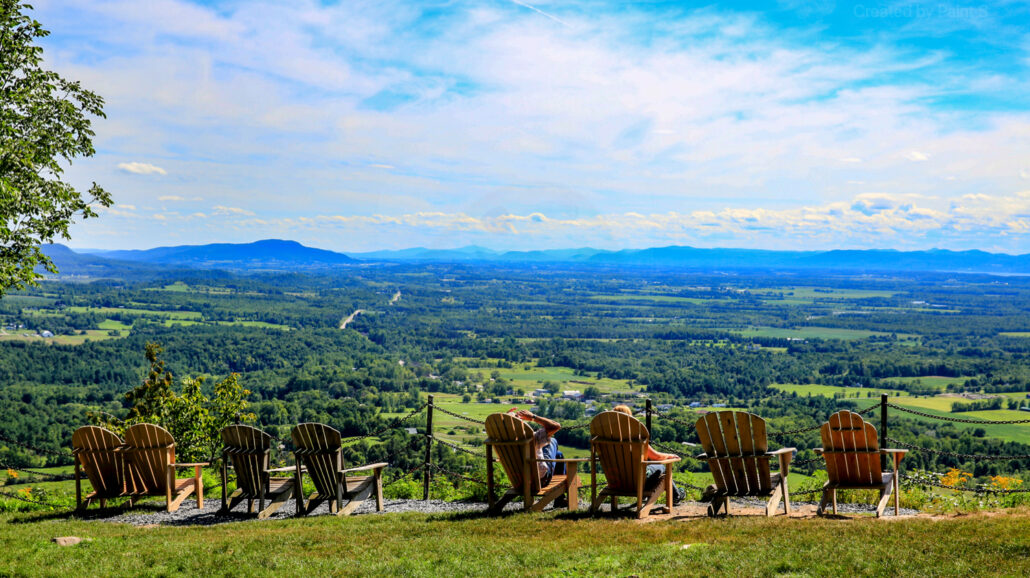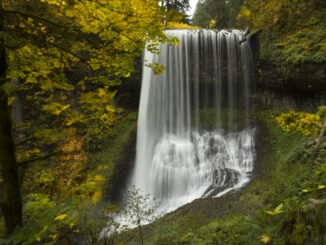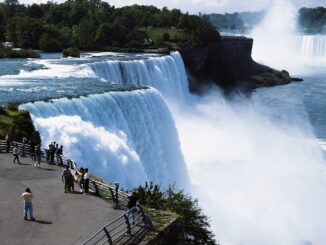
Vermont’s legislature is poised to debate the future of Vermont State Parks as the system celebrates its 100th anniversary.
Increasingly popular, Vermont’s network of 55 state parks finds itself at something of a crossroads. With a storied and celebrated history, the state parks there are already among Vermont’s top tourist destinations.
But with this momentum comes challenges.
The parks in Vermont are mainly tailored to attract and serve visitors in the warmer, snow-free months. Vermont’s residents and visitors have made it known that they want to increase their enjoyment of these parks in winter, as well, so Vermont State Parks has been put on notice.
Staffing is also a perpetual challenge.
Most Vermont State Parks employees are seasonal and part-time workers, and turnover stands at about 30%.
And as with other parks management bureaus in other states, Vermont State Parks is struggling to fund maintenance and improvement projects, Director Nate McKeen told Public Parks.
McKeen said the root of that problem is the same as faced in other states: inflation.
“Projects are moving but increasingly expensive,” McKeen said. “Any projects delayed or postponed simply increase in costs later. Funds do not stretch nearly as far as they used to.”
The project backlog includes plans to help state parks meet accessibility standards under the 1990 Americans with Disabilities Act or ADA. Vermont State Parks also wants to make its parks more resilient to climate change—they’re facing the same threats from flooding and wildfires that other state park systems must deal with.
“Our project lists are growing to best adapt to climate change and flood resiliency,” McKeen said. “And we have a backlog of improvements to meet ADA standards and improve accessibility to our amazing parks which we must be sure are available and accessible to everyone. Not just our traditional visitors.”
Planning for the next 100 years
McKeen recently gave a public lecture on Vermont State Parks to an audience hosted in-person and online by the Green Mountain Academy for Lifelong Learning.
During the lecture, he detailed the evolution of Vermont’s state parks, how the network has expanded over the years, and what the future may look like. Like other protected lands in the United States, the Depression-era Civilian Conservation Core played a big role in creating the oldest state parks in Vermont.
The state established its first state park, Mount Philo State Park, in 1924. “It’s one of our most popular day-use parks,” McKeen proudly stated.
Vermont State Parks recently commissioned a third-party consulting company to undertake a comprehensive review of its properties, facilities, and operations. That report will soon go to Vermont’s state legislature for lawmakers to consider.
“We will be using the study and report as we head into this coming legislative session,” McKeen confirmed for us. “We have sent the summary of the report around to some folks ahead of time.”
The Vermont General Assembly traditionally starts new regular sessions in January.
The consultancy’s comprehensive review ran from August 2022 to July 2023 and was based in part on on-site assessments conducted at 35 of the state parks.
Among its findings, the review team found that Vermont State Parks is facing four significant challenges as it moves into the next 100 years: improving accessibility, building resilience to climate change, staff recruitment and retention, and funding, namely securing more funding and more stable funding sources.
Ambitions meet funding constraints
The fiscal hit from inflation that Vermont State Parks is feeling is now biting into its ability to upgrade parks for ADA compliance. But authorities there also want to explore ways to attract a broader range of visitors to the park. Vermont, like the rest of the United States, is becoming more racially and ethnically diverse.
Adapting the parks to climate change is another challenge that is affected by funding restrictions.
So is staff recruitment and retention.
Vermont State Parks says it has about 470 employees on its payroll but only 47 of them are full-time. The ranks of full-time employees are usually drawn from part-time seasonal staff. McKeen said that he began working at the agency as a part-time staffer, for instance.
More full-time opportunities and better pay could help with recruiting and retention, he said during his public presentation. 47 full-time workers are charged with managing and maintaining 55 state parks in Vermont, an indication that human resources at Vermont State Parks are stretched thin.
McKeen told Public Parks that he’s also exploring other ways to keep the agency he directs funded and serving the public.
He said about 75% of the agency’s revenues come from camping and day-use fees. It pulls in another 20% of its revenues from the leases they can charge to ski resorts operating partly on state forests and state park lands.
That latter 20% is increasingly vulnerable to climate change. They only receive the revenues when the ski resorts are in operation, and snow accumulation volumes have been trending downward as winters grow shorter.
Vermont State Parks gets 5% of its budget from appropriations from the state government paid by taxes.
McKeen said they’re exploring poaching additional ideas for generating revenue generation from other states. He said some state parks systems have had success with special vehicle license plate campaigns. Others have managed to tap into state lottery programs.
McKeen seems reluctant to raise day-use fees and overnight camping fees. “We want to keep parks as affordable as possible so relying on fees so much is not sustainable while keeping up with inflation and additional pressures,” he said.
He added that his office is interested in taping into businesses and other potential donors to help pay for park passes that could be handed out to demographics that don’t typically visit Vermont’s state parks.
“This is a great match with our mission of getting more folks outdoors and connected with nature while bringing in additional revenue,” he said.
For now, a celebration
The Vermont General Assembly won’t take up the consultancy’s report and its recommendations under formal consideration until the start of next year. That gives McKeen and his team a few more months to consider their options and come forth with their ideas.
For now, he and the other folks at Vermont State Parks want people living in or visiting the state to enjoy the properties under their protection.
They’re inviting everyone to visit the special 100th-anniversary website that they’ve put together.
There, visitors will find information on an array of related activities that the state parks have planned in celebration. There are a few left to participate in as the busy season closes. They include guided hikes and photography lessons at Quechee State Park, and a special commemoration of the 80th anniversary.
Vermont State Parks has also invited parks enthusiasts to contribute to the special promotional website. Viewers are encouraged to “share what Vermont State Parks means to you to help us celebrate 100 years of the great outdoors.”
As for funding options, McKeen said the idea that will likely “gain the most traction” is the proposal to pursue more partnerships through its foundation, Vermont Parks Forever, to get more communities, especially more diverse communities, outside fishing, hiking, and doing all the other things that can be done at the 55 state parks.
“This is a great match with our mission of getting more folks outdoors and connected with nature while bringing in additional revenue,” he told us.
©2025 Public Parks



